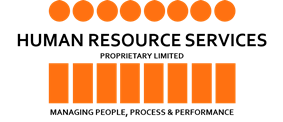
The changing language in safety, do you know the difference?
Have you ever been confused by all the different terms being used in safety today? We will quickly explain the difference between some commonly used terms. A common confusion is in the different safety forms that are being used. Often these names can be used interchangeably, but if you’re using the wrong one you may not be compliant.
SWMS (Safe Work Method Statements)
Under the OHS regulations (Work Health and Safety Regulation 2011) a SWMS must be performed before high risk construction work begins, but they can be used for other work activities. SWMS are mandatory for high risk construction work, which includes:
At heights of more than two metres, demolition, removal or disturbance of asbestos, diving, trenches or shafts deeper than 1.5 metres, temporary supports for structural alterations, powered mobile plant, explosives, confined spaces, tunnels, tilt-up or precast concrete,
or work that is in, on or near:
Electrical installations or services, roads or railways in use by traffic, water/liquids that pose a drowning risk, telecommunications towers, pressurised gas distribution mains or piping, artificial temperature extremes, contaminated or flammable atmospheres, chemical, fuel or refrigerant lines.
A SWMS is similar to a JSA and employers can continue to use them as long as they contain all the information required of a SWMS.
JSA (Job Safety Analysis)
There are many different terms for a job safety analysis; JSEA (Job Safety and Environment Analysis), THA (Task Hazard Analysis), SJA (Safe Job Analysis), Pre-Work Safety Check however a JSA is the term you will find in the legislation and all these terms mean the same thing. A JSA focuses on the relationship between the worker, the task, the tools, and the work environment. All JSAs developed must be specific to the job being performed. JSAs should be performed at the job site prior to carrying out the job. The role of a JSA is to break down a job into basic steps. Only use a JSA as a basic low level hazard identification as risk assessment tool.
SOP (Safe Operating Procedure or Standard Operating Procedure)
Are written step-by-step procedures for a specific non-repetitive task which may be hazardous or critical. The purpose of an SOP is to provide written guidance for a particular task such that any qualified person can successfully and safely complete the task. SOP’s are best developed and used for highly skilled jobs and when the equipment and work environment change often. For example, an SOP with appropriate warnings and cautions, would best be developed and used for tasks such as confined space entry, maintenance tasks, lockout-tagout, welding operations, system startup and shutdown.
Take five
A take five is used for a simple one person task that is usually only performed for one shift. The individual performing the task fills out the form. A take 5 is normally only filed if a hazard was identified.
Pre-Starts
Pre start meetings are required to keep your workers up to date with the latest and most relevant safety, productivity and training information. The pre-start meeting plays an essential role in this. It acts not only as a forum for the planning of daily site activities, but also as a news service providing workers with important industry and site information.
Remember that the use of safety forms is dependent on your code of practice. If you have any OHS concerns contact us on (07) 5530 1571.
News and ArticlesMay 18th, 20140 comments
About Us
At Human Resource Services Pty Ltd we provide cost effective outsourced HR, IR, WHS Management solutions and Permanent Placement Recruitment Services. We are here when you need us and we come to you!




